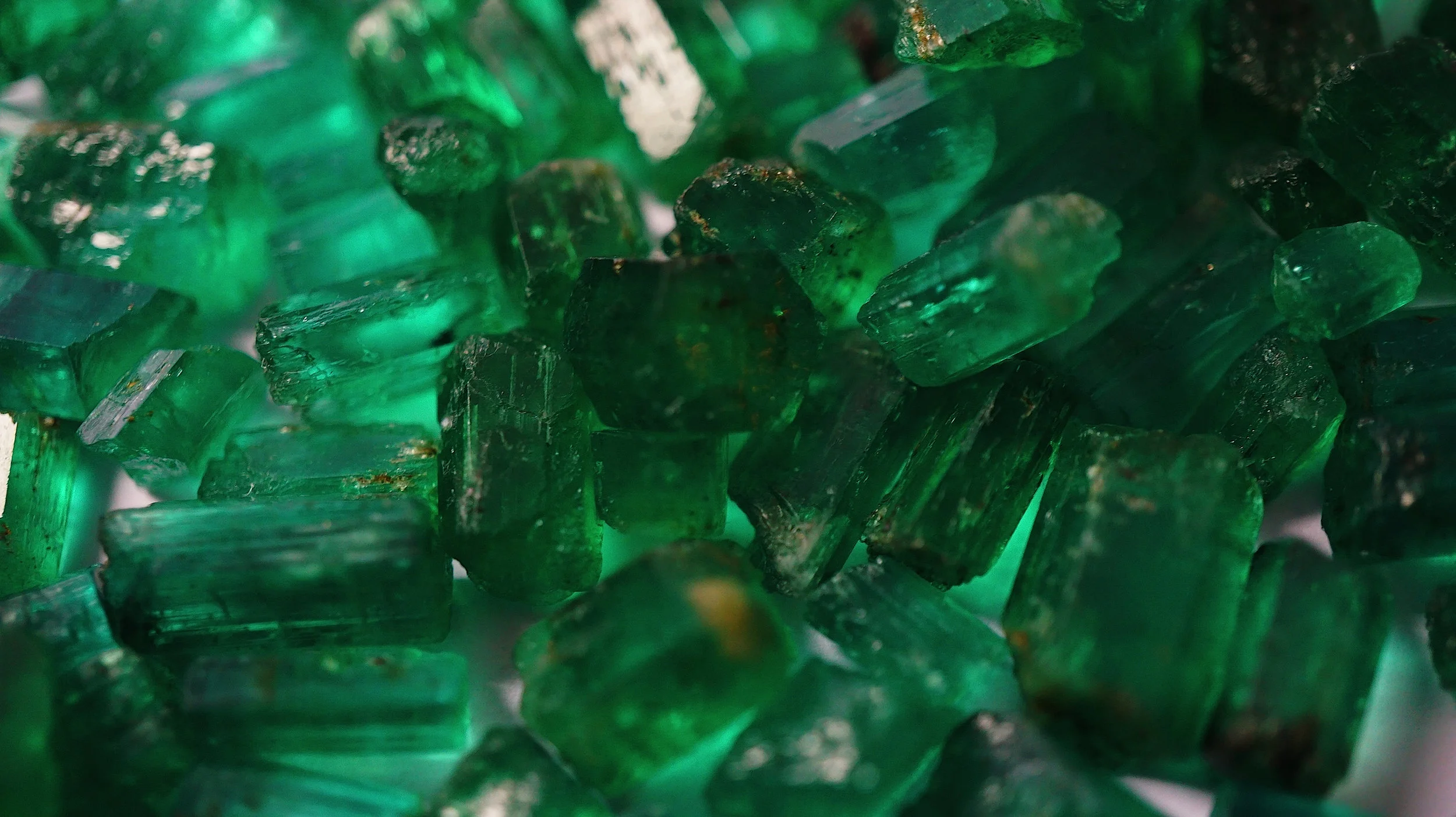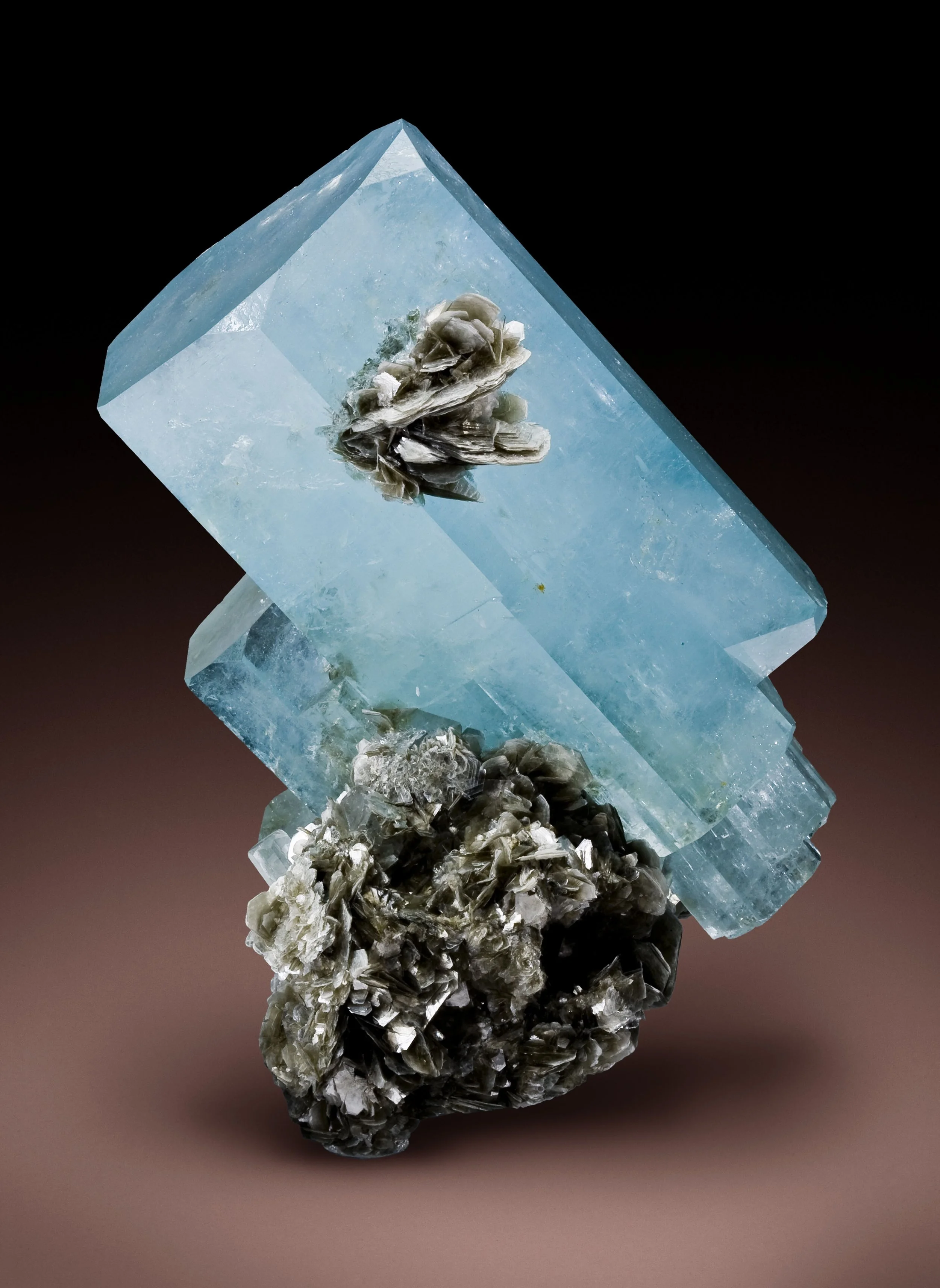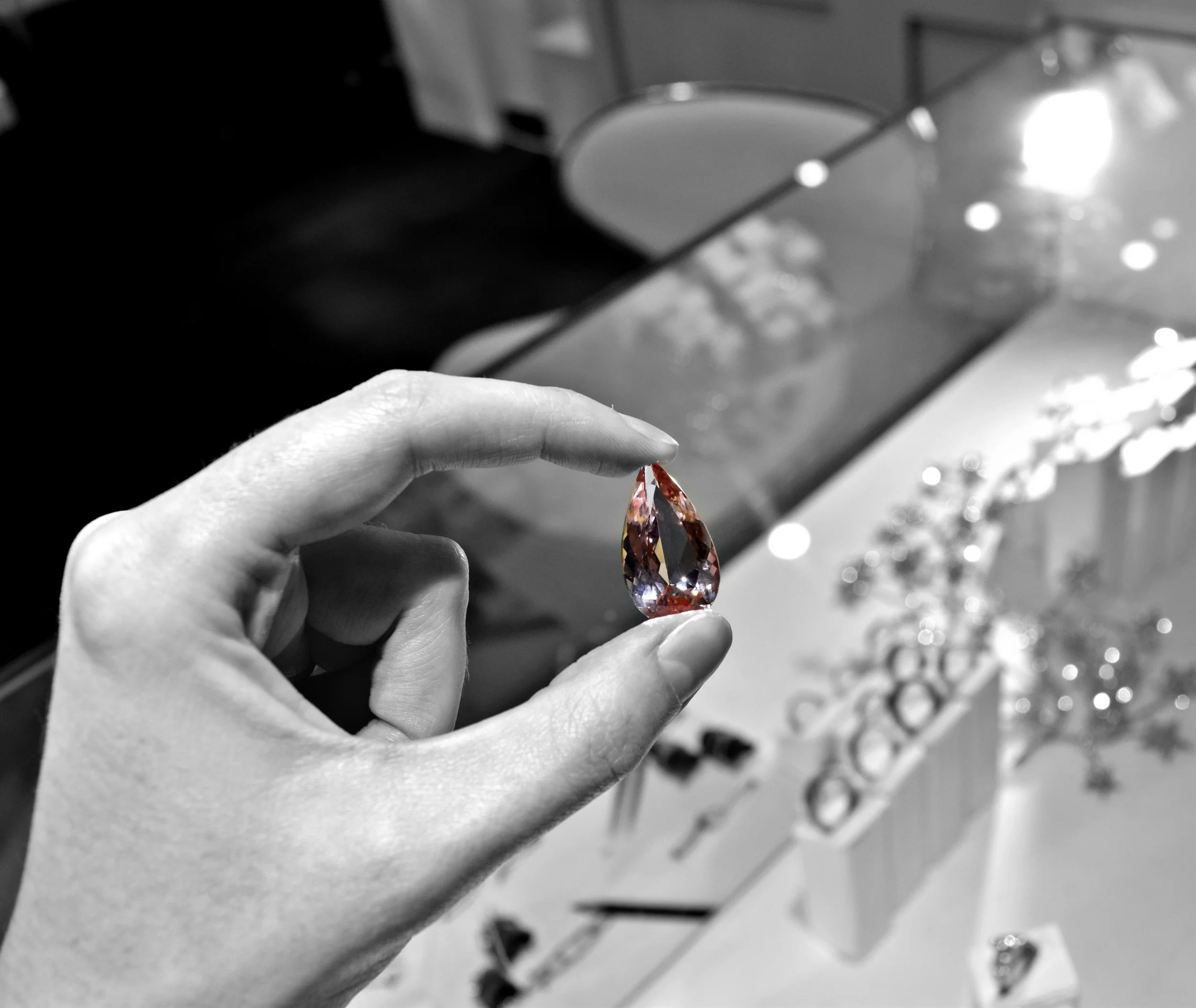Beryl
Beryl is one of the oldest known minerals, and offers a rich mix of gemstones including the emerald, aquamarine and morganite. As hinted at in the family name, each of these stones contain beryllium, an element discovered and named by the French chemist Vauquelin in 1798. The beryl gemstones have been and still are highly sought after, their prices depending on the intensity of the individual colours. Unfortunately this has also resulted in a lot of contemporary beryl stones being heat treated in order to increase their colouring.
Emerald
The most valued and known beryl variety is the emerald, often fetching greater prices than even diamonds. Its name originally derives from ancient Persian, but through shifts in time and language it’s altered and eventually landed on its modern calling emerald.
The characteristic vibrant green colour is a result of chromium and vanadium impurities, with the hue varying according to its source. The most desirable colour remains however a strong, slightly bluish green.
Very few emeralds are absolutely ‘clean’. They’re often found with inclusions of fibres or tremolite rods, internal cracks or irregular colour distribution, and can occasionally appear cloudy or ‘sleepy’. The resulting internal stresses makes emeralds very sensitive to pressure. As a result of this, the widely known emerald cut was develop specifically to resolve this issue by removing the corners in order to avoid chipping or breaking. Not only protecting the somewhat brittle material, its also used to maximise the valuable stone and intensify its colour.
Aquamarine
Aquamarine can be found in sea green, sky blue and dark blue. Back in the 19th and early 20th centuries, sea green was the preferred colour, leading to the gem’s name deriving from the Latin aqua (water) and marina (of the sea). However, since then the sky blue and dark blue have become the most desirable, and consequently, most valuable colours.
Aquamarine is dichroic, meaning the intensity of the colour changes depending on the angle it is viewed from. Because of this, the material is usually cut according to the best colour colour angle as opposed to greatest size, with the step cut or emerald cut frequently being used.
Aquamarine has a higher level of clarity than its greener emerald counterpart, making it far easier to find clean stones at a good size. And with fewer inclusions and cracks, there is less internal stress present within the stone making it less brittle compared to the emerald.
Flawed material that is cloudy and nearly opaque does exist, but is normally used for beads and cabochons.
Morganite
The lesser known of the beryl siblings is morganite. Coloured by manganese impurities, morganite can appear as pale pink, rose pink, peach, apricot, salmon and even violet in colour depending on the concentration of the element. The majority of morganite has a soft peachy pink colour that can be intensified through a closed setting in a white metal.
The first morganite stone was discovered in California alongside the equally stunning tourmaline. Like aquamarine and emerald, it is dichroic and shows two shades of colour when viewed along different axes.
Sources:
Judith Crowe, The Jeweller's Directory of Gemstones (London: A&C Black, 2006)
Cally Hall, Gemstones (London: Dorling Kindersley, 1994)
Jaroslaw Bauer and Vladimir Bouska, A Guide in Colour to Precious & Semiprecious Stones (London: Octopus Books, 1983)



